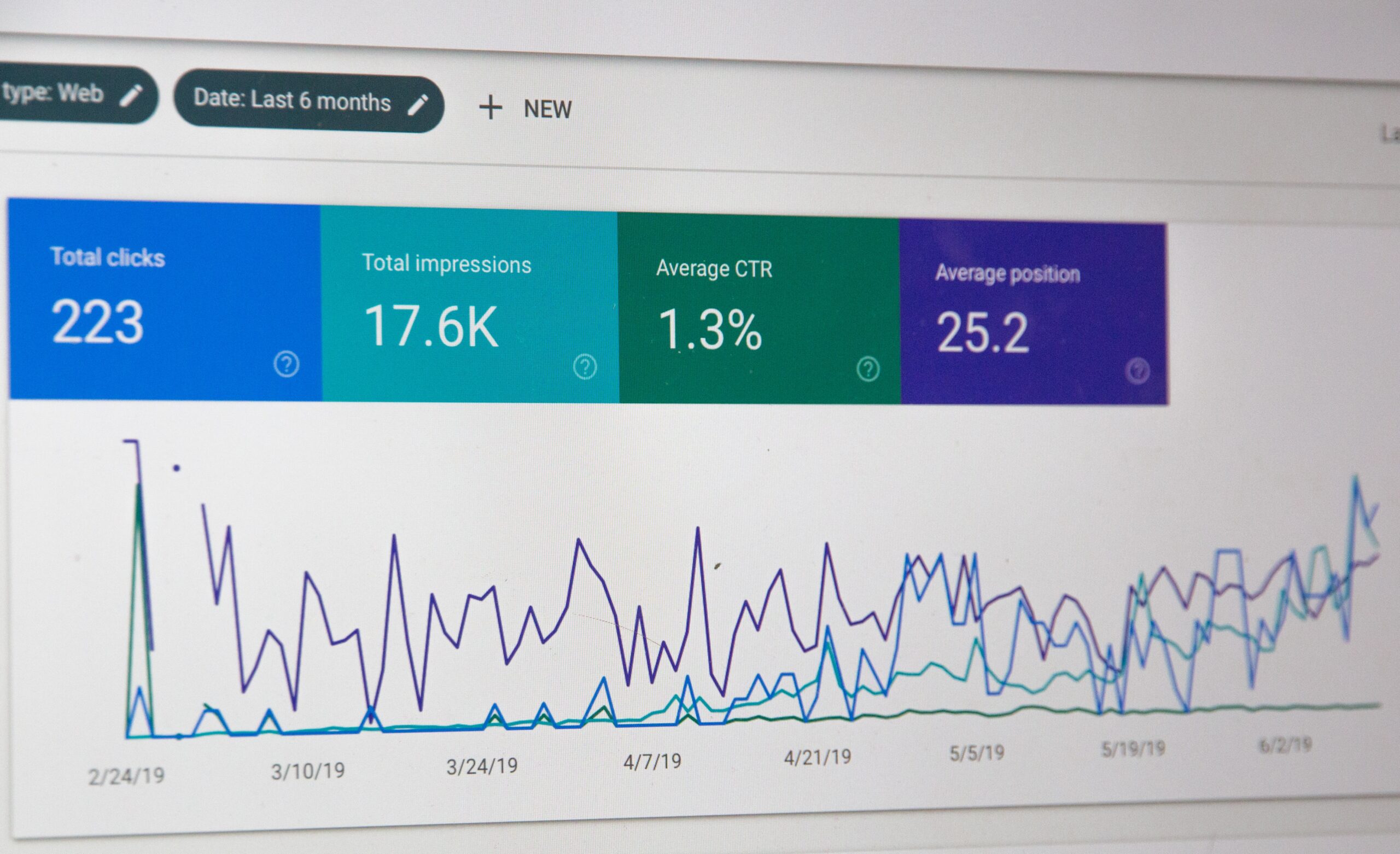How To Optimize Your Website For Search Intent And User-centric Content?
Are you looking for ways to optimize your website and enhance its user experience? In a digital world that is constantly evolving, it is crucial to align your website content with both search intent and user-centricity. By understanding what your audience is searching for and delivering content that meets their needs, you can improve your website’s visibility and engage your visitors effectively. In this article, we will explore practical strategies to optimize your website for search intent and create user-centric content that captures the attention of your target audience. Get ready to unlock the key to maximizing the potential of your website and driving meaningful engagement.
Identify search intent
Understand the importance of search intent
When it comes to optimizing your website for search engines, understanding search intent is crucial. Search intent refers to the reason behind a user’s search query, and it plays a significant role in determining the type of content that will satisfy their needs. By understanding search intent, you can tailor your website content to align with what users are looking for, ultimately improving your website’s visibility and ranking in search engine results.
Conduct keyword research
Keyword research is an essential part of optimizing your website for search intent. It involves identifying the keywords and phrases that are relevant to your target audience and align with their search intent. By conducting keyword research, you can uncover the specific terms and phrases that users are typing into search engines when looking for information related to your industry or products. This information can then be used to optimize your website content and improve its visibility to your target audience.
Analyze search engine results pages (SERPs)
Analyzing search engine results pages (SERPs) is another crucial step in optimizing your website for search intent. By studying the SERPs for your target keywords and phrases, you can gain insights into what type of content is ranking well and meeting the search intent of users. Pay attention to the types of content that appear in the top search results, such as blog posts, videos, or product pages, and take note of the common elements and themes that are present. This information can guide your content strategy and help you create high-quality and relevant content that resonates with your audience.
Create high-quality and relevant content
Define your target audience
To optimize your website for search intent, it’s important to have a clear understanding of your target audience. Define who your ideal customers are, what their needs and pain points are, and what type of content they are looking for. By knowing your target audience, you can create content that is tailored to their specific needs and interests, improving the chances of attracting and engaging them.
Research user needs and expectations
Researching the needs and expectations of your target audience is another crucial step in optimizing your website for search intent. Identify the common questions and problems that your audience is trying to solve, and then create content that addresses those needs directly. By providing valuable and informative content, you can position yourself as an authority in your industry and build trust with your audience.
Craft user-centric headlines
Headlines play a vital role in capturing the attention of users and enticing them to click on your website in search results. When crafting headlines, it’s important to focus on user-centric language and highlight the benefits or solutions that your content offers. Think about what your audience is looking for and create headlines that clearly communicate the value they can expect to find on your website. By creating compelling headlines, you can increase click-through rates and improve your website’s visibility in search results.

Optimize website structure
Improve site speed and performance
Site speed and performance are crucial for optimizing your website for search intent. Users expect websites to load quickly, and search engines take site speed into consideration when ranking websites. To improve site speed, optimize your images, remove unnecessary plugins or scripts, and enable caching. Additionally, consider using a content delivery network (CDN) to deliver your website’s assets more efficiently.
Ensure mobile responsiveness
With the increasing use of mobile devices for internet browsing, it’s essential to ensure that your website is mobile responsive. Your website should adapt to different screen sizes and provide a seamless user experience across devices. Mobile responsiveness not only improves user engagement but also contributes to your website’s visibility in search results, as search engines prioritize mobile-friendly websites.
Utilize clear and intuitive navigation
Clear and intuitive navigation is key to optimizing your website for search intent and user experience. Make sure your navigation menus are easy to understand and logically organized. Use descriptive labels for your menu items and consider implementing drop-down menus or nested categories to improve the user journey. By providing clear and intuitive navigation, you can help users find the content they’re looking for quickly and easily.
Implement on-page optimization techniques
Use target keywords strategically
Once you’ve conducted keyword research, it’s essential to strategically incorporate your target keywords into your website’s content. However, it’s important to use them naturally and avoid keyword stuffing, which can have a negative impact on your website’s ranking. Place your keywords in the page title, headings, and throughout the content, but ensure it reads naturally and provides value to the reader.
Optimize meta tags and descriptions
Meta tags and descriptions are the snippets of text that appear in search engine results and provide a summary of the page’s content. Optimizing your meta tags and descriptions with your target keywords can help improve your website’s visibility in search results. Craft compelling meta tags and descriptions that accurately reflect the content on your page and entice users to click through to your website.
Format content for readability
When optimizing your website for search intent and user-centric content, it’s important to pay attention to the formatting of your content. Break up your content into sections using headings and subheadings to make it easier to scan. Use bullet points, numbered lists, and bold text to highlight important information. Additionally, make sure your paragraphs are concise and easy to read. By formatting your content for readability, you can improve the user experience and encourage users to stay on your website longer.

Optimize for featured snippets
Understand the different types of featured snippets
Featured snippets are brief summaries that appear at the top of search engine results pages and provide users with direct answers to their queries. There are different types of featured snippets, including paragraphs, lists, tables, and videos. Understanding the different types of featured snippets can help you optimize your content and increase the chances of appearing in these highly visible positions.
Identify snippet opportunities
To optimize your website for featured snippets, you need to identify snippet opportunities. Analyze the SERPs for your target keywords and look for queries that trigger featured snippets. Take note of the content format and structure that appears in the featured snippet and create content that addresses those queries directly. By identifying snippet opportunities and creating content that meets those needs, you can increase your chances of being featured.
Craft well-structured content for snippets
Crafting well-structured content is essential when optimizing your website for featured snippets. Focus on providing clear and concise answers to common user queries, using headings and bullet points to break up the content. Include relevant information and statistics, and consider using schema markup to provide additional context to search engines. By creating well-structured content, you can increase the likelihood of your website appearing in featured snippets.
Leverage user-generated content
Encourage user reviews and ratings
User-generated content, such as reviews and ratings, can greatly benefit your website’s visibility and credibility. Encourage your customers to leave reviews and ratings for your products or services, and make sure to showcase them on your website. Positive reviews can build trust with potential customers and increase your website’s authority in search engine algorithms.
Implement social proof elements
Social proof elements, such as testimonials and case studies, can also enhance your website’s optimization for search intent and user-centric content. Highlight positive customer experiences and success stories to demonstrate the value of your products or services. Social proof not only helps to increase user trust but also provides search engines with additional signals of relevance and quality.
Utilize user-generated FAQs
User-generated FAQs (frequently asked questions) can help optimize your website for search intent and improve user experience. Allow users to submit their questions, and create a comprehensive FAQ section that provides helpful answers. User-generated FAQs can help address common queries and increase the relevancy of your website’s content. Additionally, search engines often display FAQ schema in search results, providing additional visibility for your website.

Improve website dwell time
Provide engaging and informative content
To improve website dwell time, focus on providing engaging and informative content. Make sure your content is valuable, relevant, and addresses the needs of your target audience. Use storytelling and incorporate visuals to make your content more engaging. By providing high-quality content, you can keep users on your website for longer periods, signaling to search engines that your content is valuable and meeting user needs.
Include visual elements
Visual elements, such as images, videos, and infographics, can greatly enhance the user experience and improve website dwell time. Use relevant and high-quality visuals to complement your written content and help users consume information more easily. Visuals can also help to break up lengthy text and make your content more visually appealing. By including visual elements, you can prolong user engagement and improve the overall user experience.
Utilize internal linking
Internal linking is another effective strategy to improve website dwell time and user engagement. Include relevant links within your content to guide users to related articles, resources, or products on your website. Internal linking not only helps users navigate your website more easily but also encourages them to spend more time exploring your content. Additionally, internal linking can improve the crawlability of your website by providing search engines with clear paths to follow.
Implement schema markup
Understand the benefits of schema markup
Schema markup is a form of structured data that helps search engines understand the meaning and context of the content on your website. By implementing schema markup, you can enhance your website’s visibility in search results and provide more detailed information to users. Schema markup can also enable search engines to display rich snippets, such as reviews, ratings, and event information, which can improve the click-through rates of your search listings.
Identify relevant schema types
To optimize your website with schema markup, identify the relevant schema types that align with your content. There are numerous schema types available, including article, product, local business, and event. Identify the schema types that are most relevant to your website and incorporate the appropriate markup on your pages. This will provide search engines with additional context about your content and improve its visibility in search results.
Implement structured data on your website
Implementing schema markup on your website involves adding the appropriate structured data code to your web pages. You can either manually add the markup or use schema plugins or tools to simplify the process. Ensure that the structured data is correctly implemented and accurate to provide search engines with the necessary information to understand and display your content correctly.
Optimize for voice search
Understand the rise of voice search
Voice search is becoming increasingly popular, with users relying on voice assistants like Siri, Alexa, and Google Assistant to provide answers to their queries. To optimize your website for voice search, it’s important to understand how people use voice search and the differences between voice and text search queries. Voice search queries tend to be longer and more conversational, so optimizing your content to match these natural language queries can improve your visibility in voice search results.
Optimize for long-tail keywords
Long-tail keywords are specific phrases that are typically longer and more detailed than generic keywords. These keywords are more likely to align with voice search queries, as they mimic natural language queries. Conduct keyword research to identify relevant long-tail keywords related to your industry or niche, and incorporate them strategically into your website content. By optimizing for long-tail keywords, you can increase the likelihood of appearing in voice search results.
Focus on conversational content
As voice search queries are often conversational in nature, it’s important to create content that reflects this style of communication. Write your content in a conversational tone, using natural language and addressing queries directly. Anticipate the questions your target audience may ask and answer them in a conversational and informative manner. By focusing on conversational content, you can improve your website’s relevance and visibility in voice search results.
Monitor and analyze user behavior
Utilize web analytics tools
Web analytics tools, such as Google Analytics, provide valuable insights into user behavior on your website. These tools can help you understand how users find and interact with your website, which pages they visit, and how long they stay on each page. By utilizing web analytics tools, you can gather data-driven insights that inform your future optimizations and content creation efforts.
Analyze user engagement metrics
User engagement metrics, such as bounce rate, time on page, and click-through rate, can provide valuable insights into how users are engaging with your website and content. Analyze these metrics to identify areas where users may be bouncing or spending less time, and make improvements accordingly. For example, if you notice a high bounce rate on a particular page, consider revising the content or improving the user experience to encourage users to stay on your website longer.
Make data-driven optimizations
Using the insights gathered from web analytics and user engagement metrics, make data-driven optimizations to improve your website’s performance and user experience. Experiment with different strategies based on the data you have gathered, such as adjusting your content strategy, refining your keyword targeting, or improving your website’s navigation. Continuously monitor and analyze user behavior to make informed decisions and optimize your website for search intent and user-centric content.
In summary, optimizing your website for search intent and user-centric content requires a holistic approach that encompasses keyword research, website structure, on-page optimization, user-generated content, website dwell time, schema markup, voice search, and user behavior analysis. By understanding search intent, creating high-quality content, optimizing your website’s structure, implementing on-page optimization techniques, leveraging user-generated content, improving website dwell time, implementing schema markup, optimizing for voice search, and monitoring user behavior, you can enhance your website’s visibility, relevance, and user experience. Keep in mind that these strategies should be continuously refined and adapted based on data-driven insights to ensure long-term success in the ever-evolving landscape of search engine optimization.




